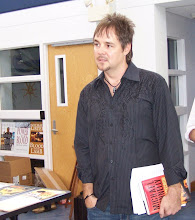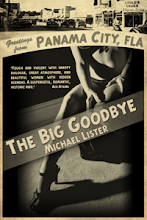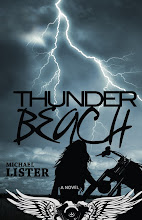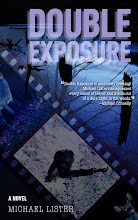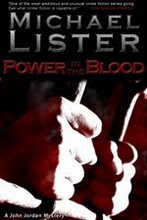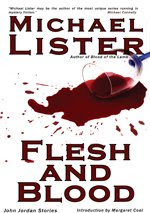
There’s a reason why “It’s A Wonderful Life” is such an enduring film—and it’s probably not what you think.
It’s not just that certain copyright and licensing issues led to it airing every night on every station every holiday season for many years, making it as much a part of Christmas as trimming the tree and exchanging gifts.
It’s not just that it’s sweet or sentimental or so called Capracorn.
It’s not just that it’s an exceptionally written, perfectly acted and directed, inspiring and entertaining movie.
It’s the Taoist-like balance it achieves, the yin-yang of its light and darkness, the truth of human existence it captures and conveys.

Birthed out of failure, “It’s a Wonderful Life” began as a short story titled, “The Greatest Gift,” written by Philip Van Doren Stern, who, after failing to find a publisher for it, made it into a Christmas card, which he mailed to two-hundred family members and friends. Originally purchased by RKO Pictures as a vehicle for Cary Grant, three different scripts were written and rejected before the project was shelved and Grant went on to make the “Bishop’s Wife”—all of which led to Frank Capra getting involved and the success the film ultimately became. Of course, success is relative. This seminal, among-the-best-of-all-times movie was a box office failure when first released in 1946.
George Bailey is a small-town man whose life seems so desperate he contemplates suicide. He had always wanted to leave Bedford Falls to see the world, but circumstances and his own good heart have led him to stay. He sacrificed his education for his brother's, kept the family-run savings and loan afloat, protected the town from the avarice of the greedy banker Mr. Potter, and married his childhood sweetheart. As he prepares to jump from a bridge, Clarence, his guardian angel, intercedes; showing him what life would have become for the residents of Bedford Falls if he had never lived—a hellish existence in the greed-driven, dark, depraved Pottersville.
Clarence tells George, “See, you’ve really had a wonderful life.”
But has he?
As “wonderful” as George’s life is—particularly in its positive impact on others, it’s not all wonderful—or even good. There’s a price to pay for living in a small town—or any size place where you don’t fit in. There’s a price to pay for honesty and integrity, for a life lived in service to others and high ideals, a high price for not having a price. The biggest price George pays is an internal one, intellectual and spiritual, the anguish and frustration that comes from being awake, surrounded by those who slumber.
Appropriately black and white, “It’s a Wonderful Life” is profoundly Taoist in its push-pull of yin and yang. These two forces, and the interplay between them, arise out of emptiness—symbolized by the empty circle they are drawn into. George embodies, and is surrounded by, and is acutely aware of, light and dark, soft and hard, masculine and feminine, receptive and aggressive, but mostly the empty that is around and in and between all things. And it’s this balance of the lighter and darker sides of existence that elevate this film to greatness. Without the one, you’d have silly, sweet, sentimental swill. Without the other, you’d have only meaninglessness and darkness. But the two together achieve a complexity and profundity that so mirrors reality it gives rise to the notion that life can actually imitate art.
Many viewers seem to miss how truly dark the film actually is, but it’s this ingredient, this rich yinish quality that enables “It’s a Wonderful Life” to earn its inspiration and ending.
The film’s shadow side doesn’t just appear when Bedford Falls transforms into Pottersville. It’s been there all along—showing through the skein between realities, in the injustice and inequity, in the claustrophobia and frustration, in the way the rich and powerful oppress the poor and disenfranchised.
Perhaps more than an alternate reality, Pottersville is the same reality as Bedford Falls—only seen differently. George Bailey, a truly good, kind, and decent person projects a goodness and decency on the world he inhabits. To him, the town is Bedford Falls. Old Man Potter has always seen it as Pottersville. The rich and powerful always view the world as theirs—their right, their entitlement, their prize, their reward. Instead of Pottersville being the version of reality that resulted from George never being born, maybe it’s what happens when a good man like George finally allows the selfishness and brutishness and meaner aspects of lesser men to cloud his vision, when he gives up and gives in, quits fighting the good fight and turns the whole thing over to them.
The Tao is the way or path (a term used in a lot of the world’s great wisdom traditions). It is ancient. Ineffable. Unnamable (“the Tao that can be named is not the Tao”). And you don’t have to be Taoist to appreciate its universals truths or the wisdom of its most sacred text, the Tao Te Ching.
This way or channel is the flow of the universe. True fulfillment and serenity comes from living in harmony with it, walking the path. Like us, George spends much of his life fighting the path, stubbornly resisting the way, insisting he has a better way. Invariably, when he surrenders and begins to travel the way he glimpses his best self and begins to practice wei wu wei—doing without doing, actionless action, that in-the-zone, alignment with the Tao, where we, like water, flow in a stream of effortless action/in-action, yielding, becoming inseparable, indistinguishable from the creator and all of creation. Truly one.
But George went to some very dark places before aligning himself with the Tao, before giving in and becoming truly free.
Like religion and philosophy, we turn to art for meaning—and few films are as meaningful and as much about meaning as “It’s a Wonderful Life.” That an average George can make a difference, can have meaning by giving meaning to others gives us hope, challenges us to make a difference. Viewing the film is a religious experience for me. Profound. Transcendent. Trasformational. Watching it each year is a rite, a ritual, a memorial and remembrance.
For me, “It’s a Wonderful Life” is both inspirational and cathartic. It moves me like no other movie. I laugh and cry (a lot). I am George Bailey. I am small town. I have a small life. My Bedford Falls existence could easily be Pottersville if not for love, for art, for meaning, for family and friends. I’m on a quest, searching for meaning, attempting to walk the way. I want to make a difference in the world and doubt that I am doing much of anything that matters to much of anybody. George inspires me to give, to take the small gifts I’ve been given, like a few measly loaves and fish, and share them with others. It’s what Philip Van Doren Stern did with his story, “The Greatest Gift.” It’s what I’m attempting to do at this very moment by writing and giving away this column, for I believe what is written beneath the picture of George’s dad in his office: “All you can take with you is that which you’ve given away.”



